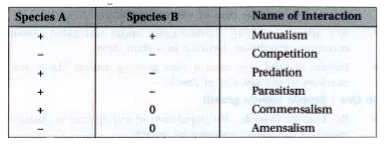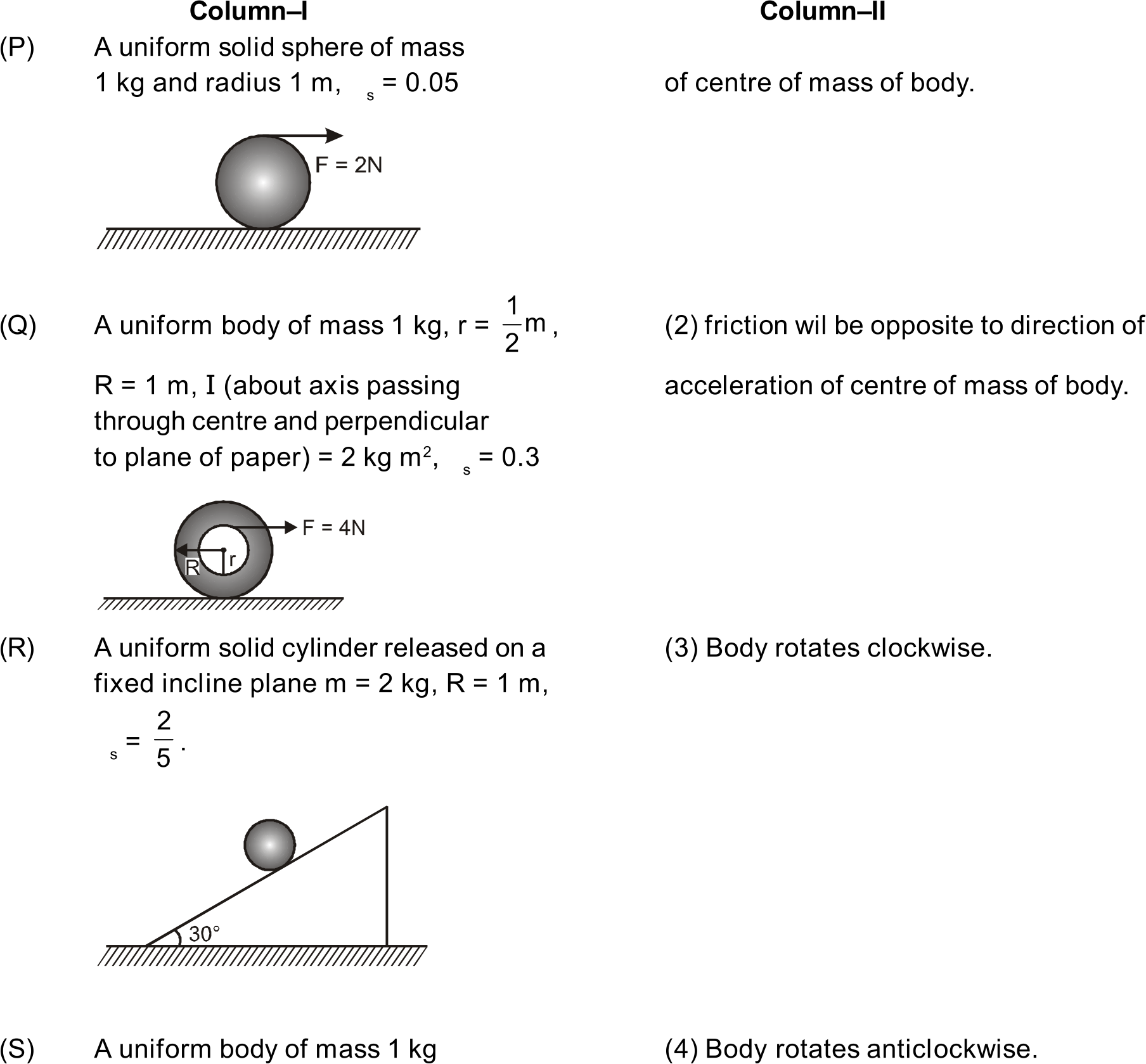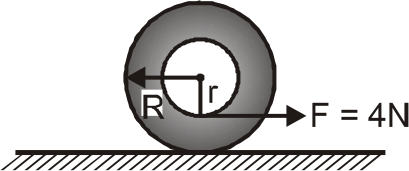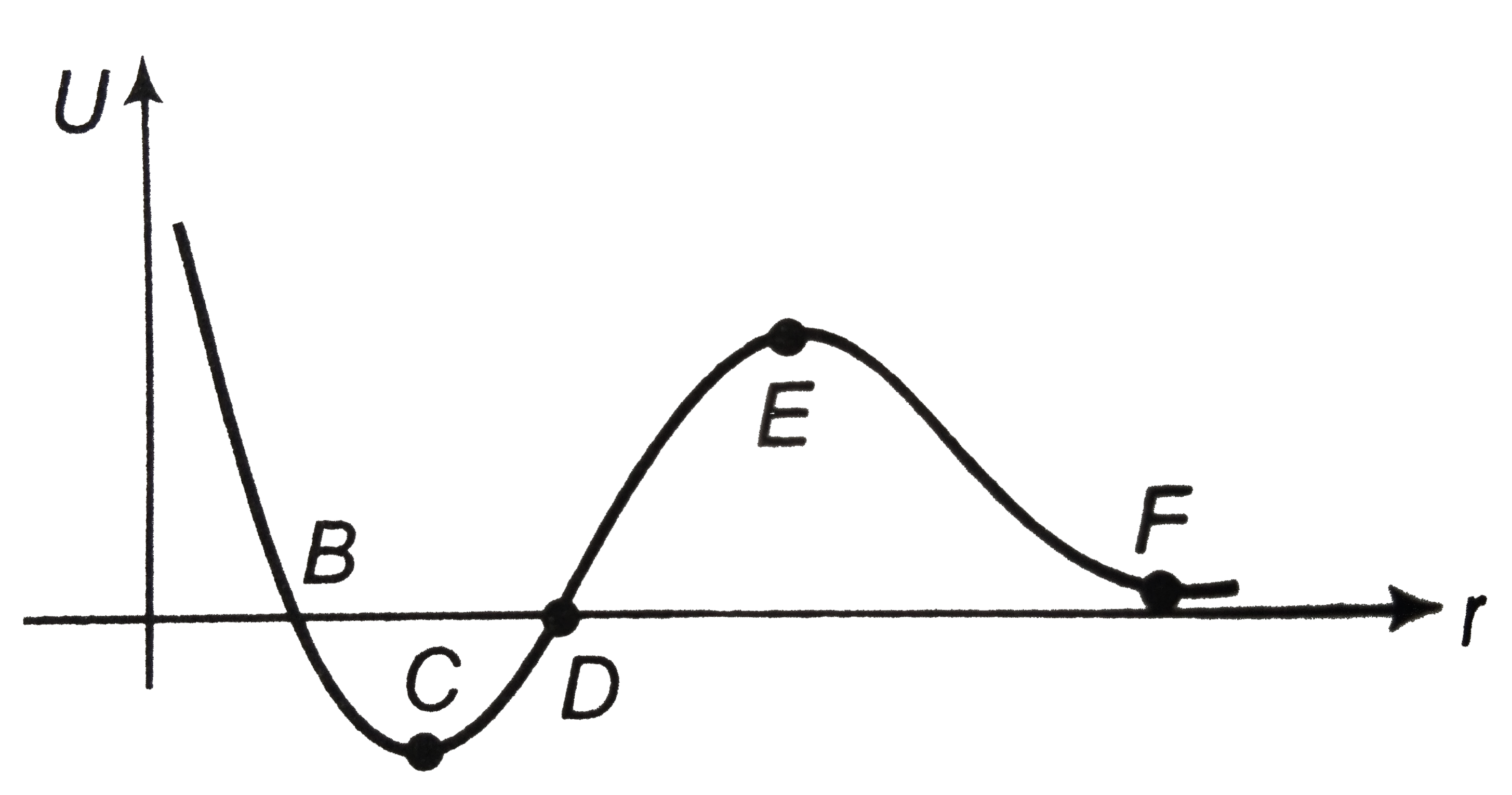Explain the general information about the population interaction and show the various results shown between them.
Text Solution
• All animals, plants and microbes in a biological community interact with each other.
• It is obvious that in nature, plants, animals and microbes do not and cannot live in isolation but interacts in various ways to form a biological community.
• Interspecific interactions arise from the interaction of populations of two different species .
• These interactions may be beneficial, detrimental or neutral to one of species or both. It various results are given below in table :

+ sign for beneficial interaction, - sign for detrimental interaction, 0 sign for neutral interaction.
• Both the species benefit in mutualism and both lose in competition in their interactions with each other.
• In both parasitism and predation only one species benefits (parasite and predator, respectively) and the interaction is detrimental to the other species (host and prey, respectively).
• The interaction where one species is benefitted and the other is neither benefitted nor harmed is called commensalism. In amensalism on the other hand one species is harmed whereas the other is unaffected.
|
Topper's Solved these Questions
- ORGANISMS AND POPULATIONSBOOK - KUMAR PRAKASHANCHAPTER - ORGANISMS AND POPULATIONSEXERCISE - SECTION - B (DIFFERENCE/SCIENTIFIC REASONS)
11 Videos
- ORGANISMS AND POPULATIONSBOOK - KUMAR PRAKASHANCHAPTER - ORGANISMS AND POPULATIONSEXERCISE - SECTION - C (OBJECTIVE QUESTIONS ANSWERS)
15 Videos
- MOLECULAR BASIC OF INHERITANCEBOOK - KUMAR PRAKASHANCHAPTER - MOLECULAR BASIC OF INHERITANCEEXERCISE - SECTION - F (MULTIPLE CHOICE QUESTIONS (MCQs))(MCQs ASKED IN COMPETITIVE EXAM)
78 Videos
- PRINCIPLES OF INHERITANCE AND VARIATION BOOK - KUMAR PRAKASHANCHAPTER - PRINCIPLES OF INHERITANCE AND VARIATION EXERCISE - SECTION -F (MULTIPLE CHOICE QUESTIONS (MCQS)) (MCQs ASKED IN COMPETITIVE EXAM)
38 Videos
Similar Questions
Knowledge Check
Which kind of population interaction is found between organism showing pseudocopulation ?
AAmmensalismBCommensalismCProto-cooperationDCo-evolutionWhich type of population interaction is found between clown fish and sea anemone?
ABrood parasitismBParasitismCMutualismDCommensalismIn column-I some situations are shown and in column-II information about their resulting motion is given. Select the correct answer using the codes given below the columns.

 APQRS(A)1243BPQRS(B)2134CPQRS(C)4123DPQRS(D)4231
APQRS(A)1243BPQRS(B)2134CPQRS(C)4123DPQRS(D)4231
Bring a packet of 'Balguti' from ayurveda shop. Learn the information about each component of it. Collect information about various other medicines and prepare the chart as shown below.
View SolutionWhat is population interaction? Explain the interactions in Mutualism and Competition.
View SolutionWhich kind of population interaction is found between organism showing pseudocopulation ?
View SolutionWhich type of population interaction is found between clown fish and sea anemone?
View SolutionThe given plot shows the variation of U, the potential energy of interaction between two particles with the distance separating them r,

View Solution
